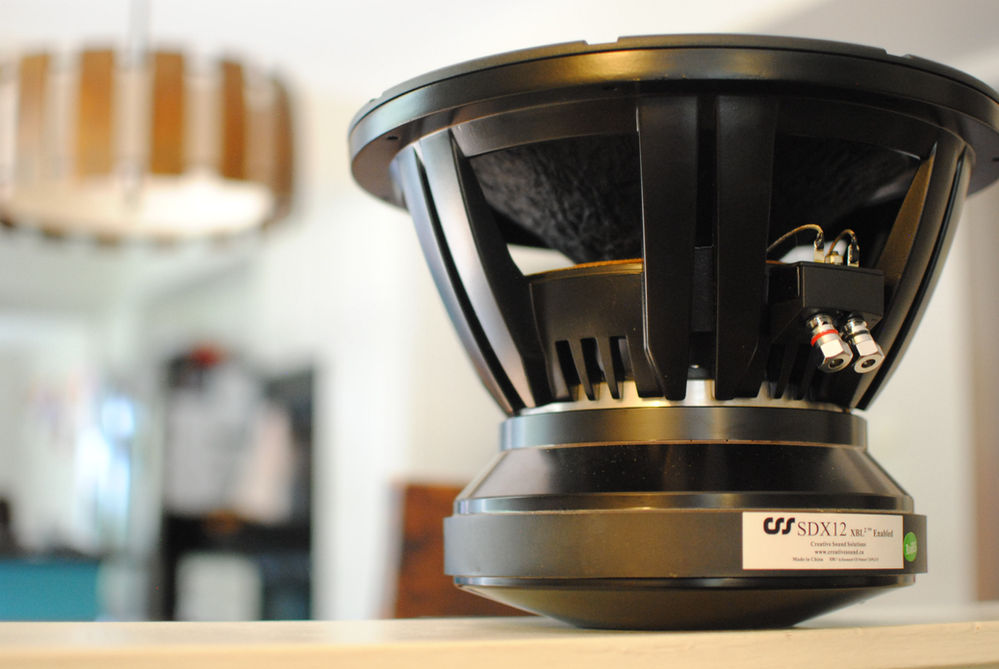So, if one puts their mind to it, purely as an idea, what is the best in terms of porting as an idea in terms of sound?
(let's leave out powering it)
What's the best port idea for a speaker theoretically?
@Decadent_Spectre @Vineethkumar01 @grindstone
Lots of people argue that ported systems as a class are a poor choice (and I was once among them).
For non-commercial/diy'ers (and particularly for home use), I think the way to look at it is to try to make sure you don't shoot yourself in the foot if you employ a "port" of some sort. Specific examples are always much easier to talk/post about. Absent that, it takes large amounts of time to think and write and, well, there are already almost 100 years of writings about those things by people much more qualified than me.
The members here are abreast of current thinking/advances of the larger manufacturers who truly are pursuing advancement. There are already some good links on the forum. If you have deeper interest in the topic, I would say to just keep reading and reading. Truly not trying to be evasive (or vacuous), but "best" always comes down to "best for what?", etc. Even enclosures without openings in them have resonances. To Keith's point, how deeply-concerned might we be about a given specific thing? Depends on the goals/application.
What I would say is to focus on what you're really trying to do--shape a resonant bandwidth to achieve some set of goals. Stick to that first. In the process, just pay attention to what might kill you

Unless they're infinite/imaginary, there will be resonances--figure out where they are and look at how hard they get excited. Look at what you can do to absorb or damp them if they are detrimental to your goals. Figure-out what's practical for you to be able to predict and to observe them. Again to Keith's point, ask yourself how much that matters and what efforts are justified in addressing them. Look at the location(s) of the openings in your design vs. the first few harmonics of standing waves. Look at their size in terms of radiation resistance--and their spacing(s) in terms of coupling. Consider the self-resonance of the port vs. the driver's passband. Consider their placement relative to boundaries and drivers and wavelengths.
At the barest level, people put openings in enclosures chiefly to extend LF and some other subset of goals. This lets rear radiation out--and this has accompanying costs. Not trying to be cagey, it's just that people have very different goals for their loudspeaker applications. A person can get into at least one argument on any single thing in audio. If you aren't sure if something might matter, post for sanity-check-input and prepare for 11 strong opinions from any 10 people. I say take advantage of the slinkier-flow port tubes if they work for you and do the other basics as above.
I think people "earn" a set of goals the hard-way. Keep listening. And measuring. And reading. And building. This stuff is fun, after-all, and there are no boundaries to the learning. Pick a design, dive-in, beat everything all up in your analysis, look at what's happening and try to understand why and compare your predictions. Consider how much work all that was and how much you'd do again or how deeply. Then do it again and again

You will have Earned some of your goals & priorities. I'm not smart-enough to know any other way. If it's not fun or interesting, don't do it--that'd be my approach. It might be fun or interesting later--take data you don't even care about while you're already set-up and SAVE EVERYTHING and label things with DATES and BACK-IT-UP. Take pics of your measurement rigs--this will jog your memory when it needs jogging.
Almost forgot. Don't forget to read in other disciplines (the muffler-people, wall-soundproofing people, musical instrument people, etc.) The whole world works with resonant systems and it seems there's always a gem somewhere.
 My own preferences would agree with the previous post about closed-box bass presentation. Labels/semantics and language get in the way in discussing "TL" speakers as the original meaning to (say) EE's is quite strict vs. common hobbyist usage. "TL's" can be magical IMO, but they are almost never small. If you are interested in further info, there are worse places to start than Martin King's pages: http://www.quarter-wave.com/
My own preferences would agree with the previous post about closed-box bass presentation. Labels/semantics and language get in the way in discussing "TL" speakers as the original meaning to (say) EE's is quite strict vs. common hobbyist usage. "TL's" can be magical IMO, but they are almost never small. If you are interested in further info, there are worse places to start than Martin King's pages: http://www.quarter-wave.com/


